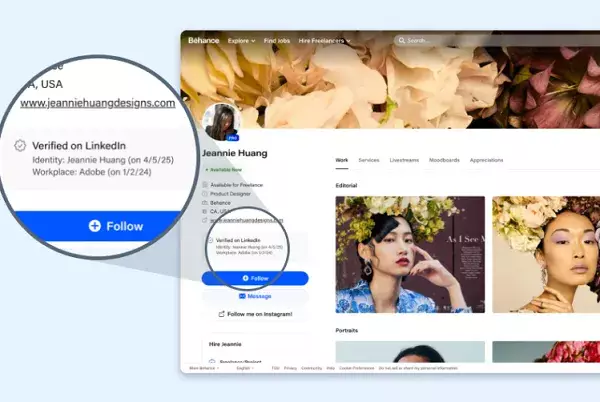In the rapidly evolving landscape of digital interactions, trust often serves as the cornerstone of relationships, especially in professional settings. LinkedIn’s recent decision to allow third-party platforms to showcase its ID verification markers is a noteworthy development aimed at bolstering transparency and trust across its network and beyond. By expanding its identity verification process to external applications, LinkedIn is not only validating users’ identities but also fostering a more authentic and reliable environment for professional interactions. This action could potentially revolutionize how we perceive credibility in online spaces, where anonymity often reigns supreme.
The Mechanics of LinkedIn’s ID Verification
Launched in 2023, LinkedIn’s free ID confirmation process has transformed how users can authenticate their identities. Unlike other social media platforms that may offer verification to celebrities or users for a fee, LinkedIn’s voluntary confirmation leverages third-party providers to establish a user’s legitimacy. This process results in a verification tick appearing on the user’s profile, signaling to others that the account holder is genuine and has undergone verification. So far, over 80 million LinkedIn members have opted into this system, indicative of its perceived value in an age characterized by escalating concerns around identity theft, impersonation, and algorithm-driven spam.
As LinkedIn partners with local verification services in various regions, the platform has strategically aligned itself with other tech giants like Adobe. This partnership showcases the implementation of LinkedIn verification in Adobe’s Content Authenticity app and Behance portfolio platform. Creators authenticated by LinkedIn can now display a “Verified on LinkedIn” badge alongside their work, reducing the need for each platform to establish its own verification process. This collaboration highlights an efficient approach to enhancing professional profiles, bolstering the credibility of individuals and institutions alike.
Benefits Beyond the Badge
The implications of enhanced identity verification techniques extend far beyond merely obtaining a badge. For users, this initiative will likely provide a higher level of assurance when connecting with new clients or job opportunities. Businesses searching for potential talent or partnerships can feel more confident in extending offers, relying on verified profiles as a protective measure against fraud. Conversely, individuals can leverage this verification as a marketing tool, differentiating themselves in a competitive workforce.
Moreover, the incorporation of features like ID verification in creative applications is a progressive step in the fight against counterfeit and misleading content. With the increasing sophistication of artificial intelligence capable of generating lifelike fakes, content validation has never been more critical. Initiatives like these could serve as a foundational element in a rapidly intensifying battle against misinformation, allowing users to connect with verified content creators and trust in the authenticity of the media they engage with.
Skepticism and Anonymity: A Delicate Balance
While the move towards ID verification is largely seen as a positive step, it does raise pivotal questions regarding user privacy and the value of anonymity. Many users engage with social media platforms under the shield of pseudonymity, cherishing the freedom it affords in expressing opinions without facing potential repercussions. The tension lies in whether the push for universal ID verification could, in practice, undermine this essential component of online discourse.
The approach to prioritizing verified identities, particularly in professional networks, shifts the dynamics of responsibility in online communications. Users may find themselves more accountable for their words and actions when their identities are publicly linked to their statements. However, this may inadvertently deter some users from participating in discussions or sharing critical viewpoints. As society grapples with the balance of transparency and privacy in the digital realm, LinkedIn’s initiative could serve as a test case for how identity verification might be implemented across other social media platforms.
The Road Ahead: Universal ID Verification?
With its pioneering venture into third-party ID verification, LinkedIn has opened avenues for potential regulatory considerations on user anonymity and identity verification across the digital ecosystem. Could this lead to a future where universal ID verification becomes the norm across all social media platforms? As legislative bodies explore the implications of user identity in preventing online harassment and misinformation, LinkedIn’s method may serve as a blueprint for regulation that safeguards users while promoting accountability.
LinkedIn’s bold moves are not just enhancing its platform but also encouraging a broader discourse on identity verification in the age of digital interactions. As we witness the evolution of online authenticity, the implications of these changes could resonate throughout various layers of social engagement, compelling us to reevaluate our relationship with identity in the virtual landscape. The conversation is just beginning, and the outcomes will undoubtedly shape the future of professional networking and online presence.


Leave a Reply